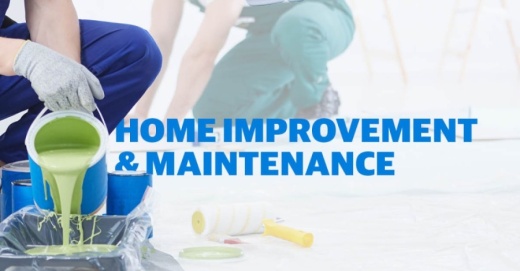Simple Home Projects
As residents spend more time at home to remain safe from the spread of the coronavirus, many are also thinking about what projects they want to tackle around the house. Hilaire Thornal, general manager at Breed and Co. hardware store in Central Austin, shared some tips on the best way to get started on some simple projects. Breed and Co. has four locations in the Austin area, including in Central Austin, Westlake, Spicewood and Dripping Springs.Replace kitchen cabinet or door hinges
Homeowners in older neighborhoods such as Bryker Woods, Old West Austin, Hyde Park and Clarksville could tackle various simple projects around the home, from replacing hinges on old doors and cabinets to tearing up carpet. Thornal recommends customers get as specific as possible with the look of hinges, carpet or other items in order for hardware store employees to help customers keep the aesthetic and look of the house intact.
Start a garden at home
Whether planting herbs and vegetables or a flower garden to brighten up the yard, Thornal said there are three important things customers can do to start planning: decide on a vision, set a budget and know how much space they have. Garden projects can be simple with mulch and flower pots, but people who want to take on a more complex project can also pick up materials to build raised garden beds at home. More information about building a garden can be found below.
Give old walls a fresh coat of paint
Much like gardening, putting together a vision before heading to the store will help customers get ahead as they pick out a new color for their home space. Thornal said a lot of customers have come into Breed and Co. wanting to repaint the room they were turning into a home office, and that catapulted some to take on other projects around the house. “Now is the time,” Thornal said.
Tips from a local painter
Johnny Montalvo, a manager at Clement’s Paint—a locally owned Benjamin Moore paint and supply dealer with five locations in Austin—spoke with Community Impact Newspaper to lend tips to those looking to freshen up their homes.What is needed to match a wall's existing paint color
While paint suppliers may be able to find a paint that matches the color on a wall, Montalvo said it can sometimes be difficult to find paint for a touch up depending on a number of factors. Because different brands have different names for colors, knowing how old the paint on the wall is, the manufacturer and the paint’s sheen could all help pinpoint the perfect color. With more information, the easier it is to find the exact paint needed, he said.
When to apply primer
When painting an interior wall, Montalvo said primer should be applied prior to the first coat of paint if the wall is brand new sheet rock, if it has any stains such as mold, scuff marks or smoke damage, or if the new color is dramatically different than the current color on the wall. Primer helps covers the previous coat of paint with a neutral white and will allow a new coat to stick more easily, but should not be used as a final coat.
What to look for in a paint kit
Montalvo said you can tackle almost any paint project with a basic paint brush, roller and a tray. However, the size of the project or home could determine the quality of tool a painter should purchase. For small or one-time paint jobs, prepackaged starter kits available at local hardware stores will likely get the job done, while large projects or those that may take an extended amount of time to complete could benefit from an upgrade in tool quality and other items including tarps, roller rods and brushes of different sizes.
What to invest in caulking
Caulking is used to seal the space between two surfaces. Products available can vary in price and specifications. Montalvo said to select a caulk that is designed to be applied on the specific surface being treated. In terms of price, while the cheapest caulk could last up to four years when applied correctly, inexperienced caulkers could run into trouble getting it to work perfectly. Montalvo suggested moderately priced or higher-end caulk that is easier to work with and will last longer.
 How to make a garden
How to make a garden
Choosing a containerThe bigger the better—larger containers allow for larger root systems and larger plants as well as holding more water for hot days. Containers can typically include half wooden barrels, buckets or baskets; old bathtubs, galvanized metal tubs, or other tubs or troughs. Hanging baskets are also good to save space and can be used for plants such as herbs or cherry tomatoes. When putting a garden together, add about an inch of coarse gravel in the bottom of the containers to improve drainage.
Garden care tips
Once a garden is up and growing make sure to continue caring for your plants. Climbing vegetables should be supported with cages, twine or a trellis. Liquid fertilizer should be fed to plants as directed. Plants need at least five hours of sunlight per day and may need to be watered once or twice per day. Also, make sure to watch and treat plants for insects as needed.
Popular vegetables
Different vegetables grow well in different seasons. In the summer months, pepper varieties, sunflowers and basil plants can thrive in the Texas heat, while cilantro does well in the cooler winter temperatures. Lavender plants can survive year round and bloom in the spring, while rosemary plants also withstand the hot summers and cool winters with proper watering. Squash and tomatoes can also be grown with proper care.





